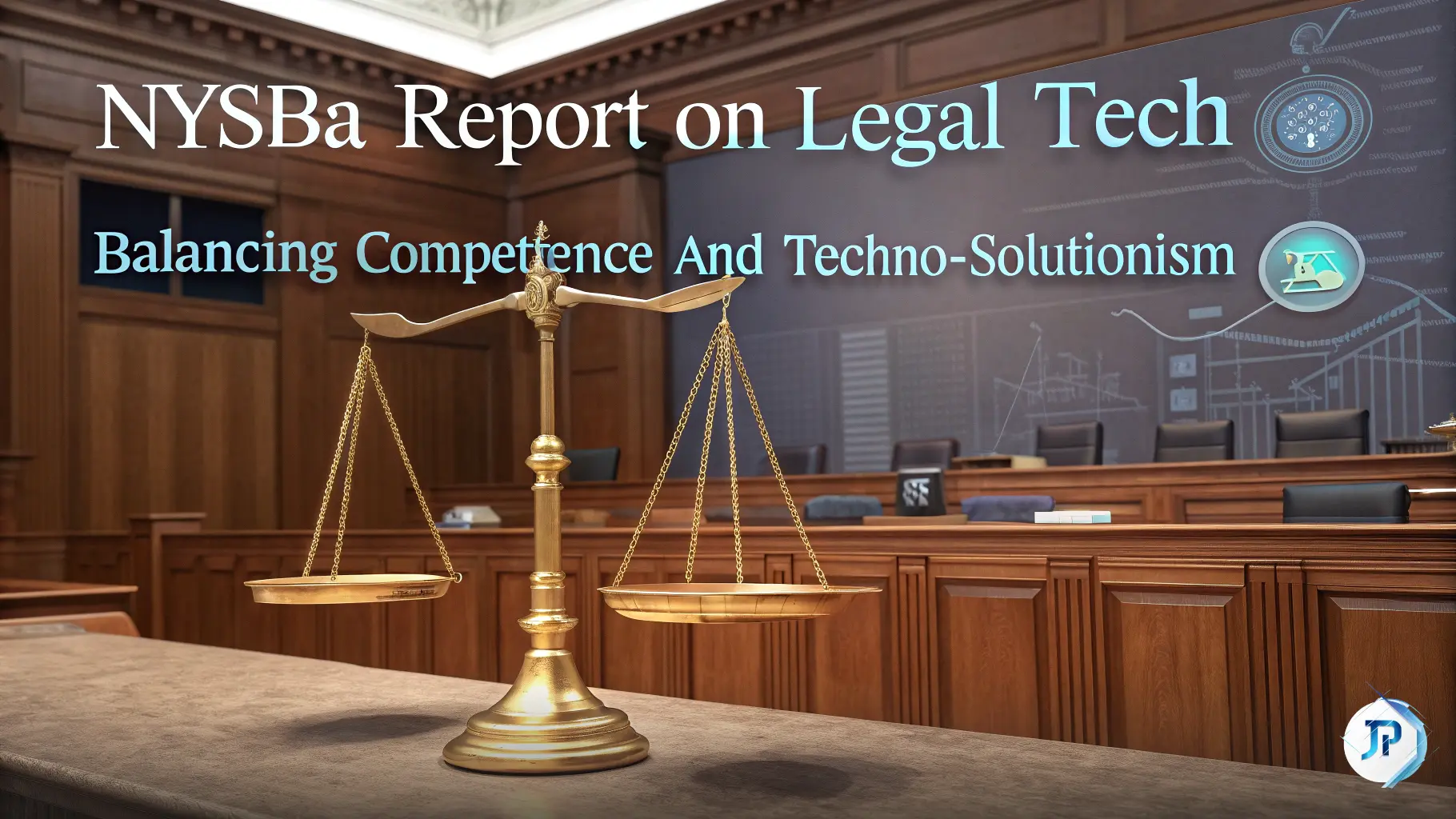NYSBA Report on Legal Tech: Balancing Competence Requirements and Avoiding Techno-Solutionism

The NYSBA report highlights a dual obligation: attorneys must adopt efficiency-enhancing technologies while avoiding overreliance on tech solutions. Learn the implications for legal practice in 2025.
Introduction
The legal profession stands at a technological crossroads in 2025. With artificial intelligence (AI) and automation reshaping traditional practice areas, staying skilled in tech isn't just an advantage—it’s becoming a professional obligation. A recent report from the New York State Bar Association (NYSBA) takes this issue head-on, signaling a transformative shift in how legal competence is defined.
The NYSBA report makes a bold statement: "A refusal to use technology that makes legal work more accurate and efficient may be considered a refusal to provide competent representation." This article breaks down the report's findings and serves as a guide for attorneys to balance adopting advanced technology with maintaining core ethical standards.
Understanding the NYSBA’s Position on Technological Competence
What Does "Competent Representation" Mean in 2025?
The NYSBA emphasizes that adopting efficiency-enhancing technologies is essential for modern legal practice. Here are its key findings:
- Competence Standard Updates: Attorneys have an ethical obligation to stay informed about technologies that can improve accuracy and efficiency.
- Necessary Tools: E-discovery platforms, case management software, and legal research platforms now fall under tools necessary for competent representation.
- Real Consequences: Attorneys failing to integrate relevant technologies may face ethical violations. For instance, older cases have shown how neglecting tools like e-discovery resulted in adverse judgments.
Tailoring Standards by Practice Area
Competence requirements aren’t one-size-fits-all. For larger firms, advanced case analytics might be critical, while solo practitioners could focus on tools that simplify administrative tasks.
The Dangers of "Techno-Solutionism" in Legal Practice
What Is Techno-Solutionism?
While adopting technology is essential, over-reliance poses significant risks. The report highlights "techno-solutionism," where technology oversimplifies complex decisions reliant on professional judgment.
Risks of Too Much Tech
- Legal Errors: AI tools, though accurate, lack contextual understanding.
- Ethical Pitfalls: Misusing client data or depending on technology for decisions that require nuanced judgment could harm reputations.
Keeping Human Insight at the Forefront
The NYSBA cautions against technology that removes too much oversight:
- Examples: Automated contract platforms sometimes fail to account for specific legal nuances.
- Action: Ensure attorneys remain involved in decision-making through routine evaluations of outputs.
Implement Thoughtful Tech Use
Adopt tech tools carefully by:
- Verifying how algorithms process legal work.
- Establishing clear checkpoints where human review is mandatory.
Practical Compliance: Balancing the Technological Mandate
First Steps to Avoid Ethical Pitfalls
Implementing a tech strategy requires:
- Tech Evaluation: Identify essential tools for your legal focus.
- Internal Policies: Establish best practices for implementing technology.
- Train Everyone: Ensure attorneys and assistants attend seminars on these tools.
Documentation Strategies
Maintain clear documentation of how your practice adheres to the NYSBA guidelines. Examples include:
- Records of tools used for case analysis.
- Documented human oversight on AI-based outputs.
The Economic Implications of NYSBA’s Technology Standards
Adopting technology isn’t just about duty—it influences the bottom line. Here’s a breakdown:
Managing Costs Without Compromise
- Large Firms: Can spread costs across clients.
- Small Practices: Explore cost-efficient subscription models or focus on essential tech tools. Tools like SaaS-based case management platforms cater to these needs.
Client Expectations
Clients increasingly expect efficient processes. Therefore, educate them about the benefits of legal tech—especially when technology helps to justify billing structures.
Competitive Edge
Solo practitioners and startups can adopt user-friendly, scalable tools that meet standards, providing differentiation from firms resistant to tech integration.
Future Trajectory: Where Legal Tech Competence Requirements Are Heading
Predictions by 2030 and Beyond
- Emerging Standards: Blockchain for secure contracts and expanded use of predictive AI in litigation could become requirements.
- Higher Demand for Tech-Literate Attorneys: Firms without tech-savvy lawyers risk losing competitive ground.
Proactive Steps
Stay ahead of these shifts by attending tech conferences and joining tech-oriented committees within your bar association.
Conclusion
The NYSBA’s report ushers in an era where tech adoption isn’t just recommended—it’s required. However, responsible use mandates thoughtful integration, regular training, and a clear balance between technology and human oversight. As legal professionals, embracing these changes ensures both ethical compliance and a competitive edge.
Consider conducting a technology audit in your practice today. Reach out to learn more about aligning with these best practices while equipping your firm for future success.